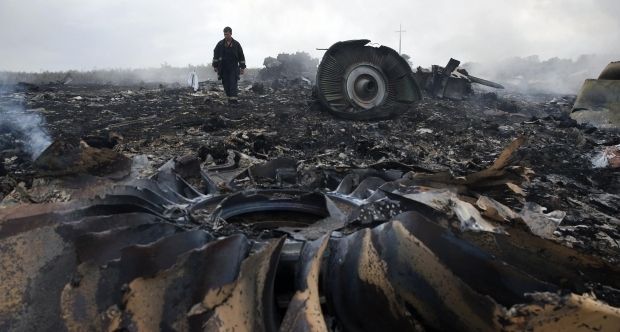
The Dutch Safety Board report presented on October 13, 2015 said the weapon used was a 9N314M-model warhead carried on the 9M38M1 missile. The Board came to the conclusion that the airliner was shot down from the Buk missile system, TASS reports.
"If we assume that the airliner was downed by a Buk missile, then characteristics of fragments outlined in the report are not the same as characteristics of 9N314M warhead's submunitions," the document said.
Russian specialists said that the mass and size of the two fragments that led the commission to believe the 9N314M warhead was used "are not in line with field tests and experiments." Moreover, "chemical composition of fragments described in the final report contradicts the conclusion on them being part of the 9N314M warhead."
"Characterizes of punctures on the airliner's fragments do not correspond to characteristics of punctures that appear at the explosion of the 9N314M warhead," the Rosaviatsiya head noted.
He reminded that field tests confirmed that many punctures of a certain form should have been found on the airliner's fuselage. "There were no punctures like this on fragments of the Boeing 777," he stressed.
A report prepared by the Dutch-led international commission indicated no distance, at which a fatal missile was detonated, Oleg Stotchevoy went on to say.
"At the beginning of the probe, the Dutch side indicated that the missile blast occurred at a distance of 4-6 meters from the airliner. Back at that time, we were categorically against this and were convincingly proving that the detonation occurred much closer. With the help of calculations and even live demonstrations we were proving that our version was more correct," he said in an interview with Rossiya-24 TV Channel.
The distance of the missile detonation "was narrowed to three meters," according to the Dutch experts and this distance was "simply washed out and not indicated at all," Storchevoy added.

